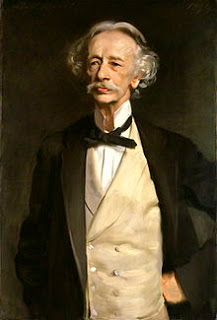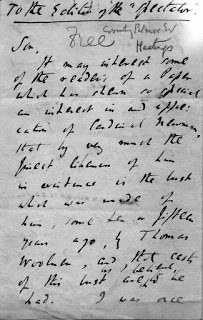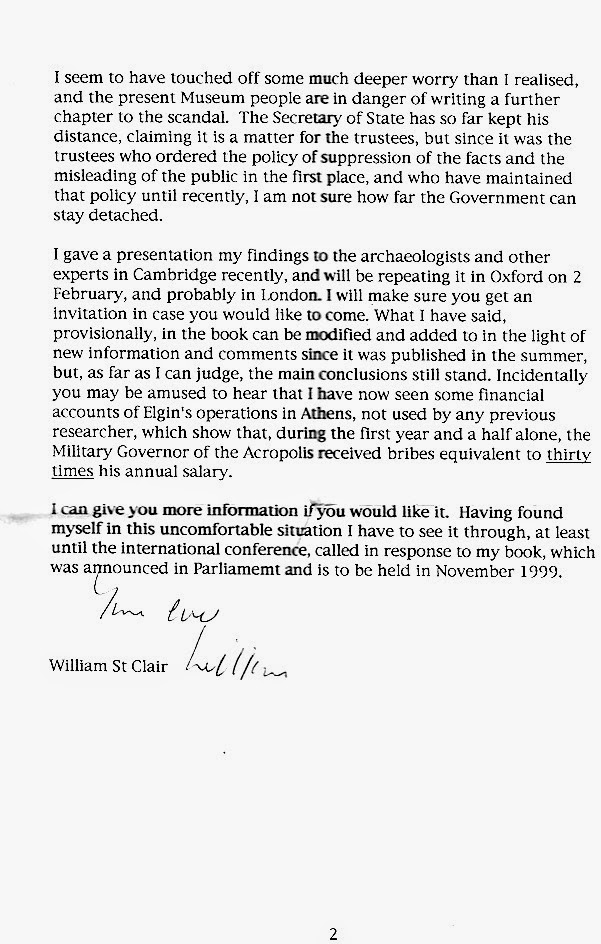
The poet who composed the long love poem,
The Angel of the House, which appeared in four volumes from 1854, became, like many of his generation, a convert to Catholicism, and so his remarks, voiced in a letter to the editor of the
Spectator regarding a bust of Cardinal Newman by the pre-Raphaelite sculptor Thomas Woolner, come as no real surprise.
The original letter, written from Hastings, was discovered in a pile of similar autographed material.
 ‘It may interest some of the readers of a Paper which has shewn so special an interest in and affection of Cardinal Newman, that by very much the finest likeness of him in existence is the bust which was made of him some ten or fifteen years ago by Thomas Woolner…I was once in a room containing first-rate busts of all the most famous men of the past generation. That of Newman made all the others look like vegetables, so wonderfully was it loaded with the great Cardinal’s weight of thought and character.’
‘It may interest some of the readers of a Paper which has shewn so special an interest in and affection of Cardinal Newman, that by very much the finest likeness of him in existence is the bust which was made of him some ten or fifteen years ago by Thomas Woolner…I was once in a room containing first-rate busts of all the most famous men of the past generation. That of Newman made all the others look like vegetables, so wonderfully was it loaded with the great Cardinal’s weight of thought and character.’
We don’t know who the sitters for other busts were, or the identity of the sculptors, but we do know that as a friend of Woolner, as indeed he was of Dante Rossetti, W. Holman Hunt, and other Pre-Raphaelites, Patmore was bound to defend the merits of the Newman bust over perhaps some more conventional works of art. As a child, Patmore himself wanted to be an artist and at the age of fifteen won the Silver Palette of the Society of Arts. The poverty of his father made such an ambition impossible and Patmore ended up in the British Museum library. In later life, spurred on by his association with the Pre-Raphaelites, he wrote on Art, but he is best known today as the author of
The Angel of the House, although it is generally recognised that his best poems, which have strong spiritual qualities, were written towards the end of his life. [R R]
 Abstracted from The Good Time Guide to London(1951)
Abstracted from The Good Time Guide to London(1951)





